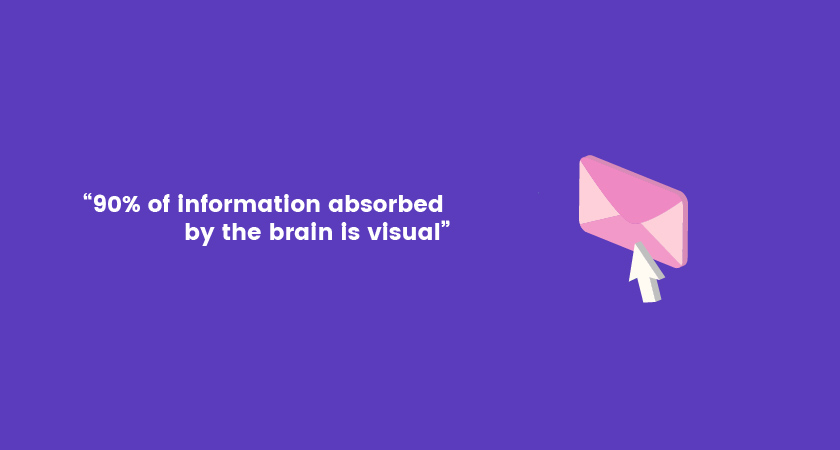Email remains the standard for digital communication, as useful for one-on-one conversations with colleagues as it is for sending messages to clients around the world.
For marketers, it remains a great way to connect with your audience. But as long as email remains such a popular method of communication, some challenges will also remain.
Business users deal with more emails in their inbox than ever before. A study from the Radicati Group suggests that there are currently 4.9 billion email accounts worldwide, sending and receiving roughly 225 billion emails between them. To be clear, that’s 225 billion emails every day. According to Radicati, this equates to the average business user receiving 92 emails on a daily basis.
The harsh truth is that a lot of email gets ignored. And if your email doesn’t stand out against the other 91 in your recipient’s inbox, there’s a good chance yours will be one of them.
So, what can you do to get yours noticed? There are numerous tips and tricks rumoured to boost your email open rates, that range from the easy to the extreme; from finding the optimal sending time to mobile optimisation or asking subscribers to whitelist your email address.
But we think the most reliable way to boost your open rates is through a consistent focus on your email’s lifecycle. That means focusing on your audience(s), your email’s content, your email’s design and what to do once it’s been sent. In this post, we’re going to cover four key areas of email marketing that can help arrest the attention of your audience, bring more traffic to your website and ultimately earn you more leads.
1. Consider your content
Your email content is crucial. Without content that resonates with the reader, they’ll simply move on to the next email.
Subject lines
Subject lines are a big part of your content—the best of which use snappy and actionable language to arrest the reader’s attention. You need to strike a balance between telling them why they should open the email without giving away exactly what’s inside. Think about:
• Creating a sense of exclusivity, urgency or personality
• Quoting statistics, metrics and testimonials
• Posing a compelling question
• Using humour
Body text
Clarity should be the cornerstone to your emails. The body text should cater more towards information than persuasion (save the latter for your subject lines). Once they’ve opened the email, you need to be clear and to the point, making it as easy as possible to understand. Sticking to short sentences and paragraphs and always keeping your message on-point will help you do this.
2. Get noticed
The other vital ingredient to an appealing email is design. With our attention spans shorter than ever, visual stimuli are more important than ever; 90% of information absorbed by the brain is visual. So, the first impression your email imparts on the reader is arguably the most important. And the first thing they should see is some imagery.

With the array of different ways customers can engage with you, your content has more opportunity to ‘speak’ than ever. How your brand looks has a profound effect on how your message is perceived; visual design and branding in your emails is a great way to create a sense of recognition between you and your readers.
3. Don’t be afraid to experiment
To stand out from the crowd, you might want to test different styles of content and design. There are so many variables when it comes to creating an email that is going to draw your audience in. A/B testing—the process of creating two similar emails to compare which performs better—should answer the following questions:
• What day or time should you send it out?
• What subject lines are the most effective?
• What name should you use in the “From” field?
• Should you use merge tags?
• Will certain templates, content or calls to action affect engagement?
By analysing the open and click rates of your email version “A” and “B” (which are sent to a sample of your audience), you can gauge engagement and see which one performed better. You’ll be informed of the ‘winning’ email, which is sent to the rest of your recipients.
A/B testing gives you some freedom for experimentation, helping you keep your finger on the pulse of the latest marketing trends and keep your emails feeling fresh. And that should naturally transfer over to your readers, helping pique their interest and boost your open and click rates.
4. Track your results
Like any marketing, email marketing isn’t over once the email has been sent. You should be looking for ways to monitor your campaign’s success and give that extra effort to get your emails noticed.
Email automation tools offer far more than scheduling your email campaigns. Sophisticated software uses analytics and reporting so you can refine and improve your emails as needed.
You can also use software that notifies you when an email’s been opened. So if you know a CIO has opened your email, but not responded, you can follow them up. It’s a method that brings up some controversy, but this is just the nature of the modern industry. Companies like LinkedIn (with their advertising) and HubSpot are doing it—why aren’t you?
If you’re looking for some must-have tools for email marketing that make your life just a little bit better here you can find 7 Awesome Free Resources for Smart Email Marketers.
Make your emails an open book
Email’s prevalence in the enterprise space has caused the life expectancy of emails to be shorter than ever. To combat that, you need to nurture your email marketing campaigns through their entire lifecycle—from start to finish. Make a determined effort towards the content you’re writing, how your email looks and how you send it out to your audience. If you can do that, you’ll start to see your open rates begin to improve as you connect with your email recipients.


